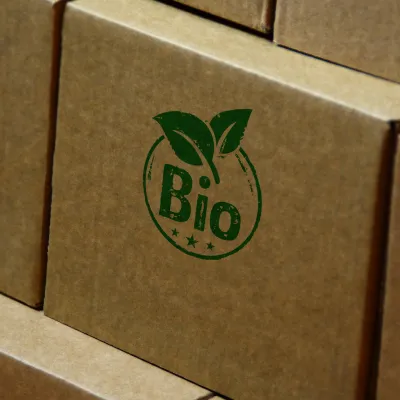Understanding Organic Additives
Organic additives play a critical role in the world of food production and consumption. They are utilized to enhance the quality and safety of organic foods, providing consumers with options that align with their health and environmental values.
Role of Organic Additives
Organic additives serve various functions in food products, primarily focusing on enhancing flavor, texture, and shelf life. Unlike conventional additives, organic additives must come from natural sources and cannot contain synthetic substances. Chemical preservatives, flavors, and synthetic colors are prohibited in organic packaged foods, compelling the use of only natural flavors produced without synthetic chemicals and colors (EWG). This enhances the purity of organic products the consumer receives, targeting health and safety concerns prevalent among many shoppers.
The use of organic additives also reflects a commitment to sustainable practices. Organic agriculture refers to farming without the use of synthetic inputs, while conventional agriculture employs synthetic fertilizers, pesticides, and genetically-modified organisms (GMOs) (Our World In Data). This distinction is fundamental to understanding why consumers often perceive organic foods as healthier options.
Compliance with Organic Standards
For an additive to be classified as organic, it must comply with specific organic standards. These standards prohibit the use of ingredients if their manufacture, use, or disposal leads to negative environmental impacts. Organic standards also stipulate that other synthetic substances, like pheromones and vaccines, may be allowed under certain conditions due to their effectiveness in protecting crops and animals (USDA.gov).
The adherence to these standards is vital for producers who wish to market their products as organic. Increased consumer demand for organic products, driven by health and environmental considerations, motivates producers to comply with these rigorous requirements. Consumers are often willing to pay significantly more (up to 100 percent above standard prices) for organic products that assure them of higher safety and lower environmental impact.
In summary, understanding the role and compliance of organic additives is essential for consumers who are curious or concerned about what is in the processed food they buy.
You Might Also Like:
Organic vs. Conventional Additives
When comparing organic additives to their conventional counterparts, several crucial differences emerge. This section emphasizes the limitations inherent in organic foods and the presence of synthetic chemicals in conventional foods.
Limitations in Organic Foods

Organic foods are governed by strict regulations that limit the types of additives that can be used. Fewer than 40 synthetic substances are permitted in organic packaged foods, and these must undergo thorough review by both independent and government experts to ensure safety and compliance with organic standards. In stark contrast, thousands of chemicals can be added to conventional packaged foods (Environmental Working Group).
The following table summarizes some common additives found in organic versus conventional foods:
| Type of Additive | Organic Additives | Conventional Additives |
|---|---|---|
| Total Allowed | < 40 | ~2,000 |
| Examples | Vinegar, Lemon Juice | BHA, BHT, artificial colors |
The stringent limitations in organic food production aim to prioritize consumer safety and promote healthful eating.
You Might Also Like:
Synthetic Chemicals in Conventional Foods
Conventional foods may contain an extensive array of synthetic chemicals, including preservatives and artificial colors. Additives like Butylated hydroxyanisole (BHA) and Butylated hydroxytoluene (BHT) are commonly found in conventional foods and have been linked to potential health risks, including an increased risk of cancer. Unlike organic foods, these substances are not allowed in organic products.
The following table illustrates some synthetic chemicals commonly found in conventional foods:
| Additive Name | Common Use | Potential Risks |
|---|---|---|
| BHA | Preservative | Potential carcinogen |
| BHT | Preservative | May disrupt hormone function |
| Artificial Colors | Food coloring | Allergic reactions |
Understanding these differences can help consumers make informed choices about the food they purchase. So it is really important for consumers to know how to read food labels. By being aware of these distinctions, individuals can better navigate their options in the grocery store and choose products that align with their health preferences and dietary needs.
Importance of Organic Packaging
The evolving landscape of food consumption has led to a significant rise in organic packaged foods, which cater to a growing demographic concerned about the ingredients in the products they consume. This section discusses the growth of this market and delineates consumer preferences for “clean” foods.
Growth of Organic Packaged Foods

Organic packaged foods are increasingly gaining attention in the U.S. market. Currently, organic packaged food accounts for approximately 3% of the overall packaged-food market. Expert estimates suggest that sales could reach $16 billion by 2020, potentially increasing their share to 4% of all packaged foods.
The demand for organic options has been driven by consumer awareness regarding food additives and a desire for transparency in food sourcing. Unlike conventional packaged foods, which can use an estimated 2,000 synthetic chemicals, organic packaged foods are limited to fewer than 40 synthetic substances. These additives are rigorously reviewed every five years by independent and government experts to ensure compliance with strict organic standards.
Consumer Preferences for “Clean” Foods
Consumers are increasingly gravitating toward “clean” foods, which are products devoid of artificial additives and preservatives. Organic packaged foods are especially appealing because they prohibit the use of chemical preservatives, flavors, or synthetic colors. In contrast, flavors derived from synthetic chemicals in conventional foods can consist of over 100 compounds that are not disclosed on food labels .
This preference is reflected in the growing number of shoppers who actively seek out organic products as safer alternatives. The desire for transparency around food ingredients has led to greater scrutiny of food labels and an increase in demand for organic options.
| Market Segment | Estimated Market Share | Projected Sales (2020) |
|---|---|---|
| Organic Packaged Foods | 3% | $16 billion |
| Conventional Packaged Foods | 97% | $400 billion* |
*(Estimation based on overall packaged food market size)
As consumers become more informed about the impact of food additives on health, the importance of organic packaging continues to become more pronounced.
Safety Concerns and Regulations
As processed foods continue to dominate the market, understanding the implications of additives, both synthetic and organic, on health is crucial. This section discusses the health risks associated with synthetic additives and the regulations enforced by the FDA.
Health Risks of Synthetic Additives
Synthetic food additives are substances that are introduced into food products to enhance their taste, appearance, and shelf life. While many additives are deemed safe by regulatory bodies, there are concerns regarding certain synthetic additives. Some potential health risks include allergic reactions, digestive issues, and long-term health implications, such as an increased risk of chronic diseases.
Certain individuals may experience adverse reactions to specific synthetic additives:
| Additive Type | Potential Health Risks |
|---|---|
| Artificial Colors | May cause allergic reactions and hyperactivity in children. |
| Preservatives | Linked to digestive issues and may lead to increased sensitivity in some people. |
| Flavor Enhancers | Can provoke allergic reactions in susceptible individuals. |
The concern arises from the cumulative effect of consuming these additives over time, particularly in processed foods heavily laden with such substances. For more information on the specific groups of additives and their potential impacts, see our article on controversial food additives.
FDA Regulation of Additives
The Food and Drug Administration (FDA) oversees the regulation of food additives in the United States. According to the FDA, food additives must be proven safe for consumption before they can be allowed in food products. This regulation includes a wide range of substances, including but not limited to:
The FDA mandates that all additives used in food must be listed on food labels, allowing consumers to make informed choices about what they are consuming (MOJ Biorg Org Chem).
Organic additives, on the other hand, are subject to stricter regulations. The use of chemical preservatives, synthetic flavors, and artificial colors is prohibited in organic packaged foods, which must rely solely on natural flavors and approved organic ingredients. This fosters confidence among those seeking “clean” foods.
Impact of Additives on Health
As interest in food additives rises, many consumers express concerns about their potential health effects. Two additives that have drawn particular attention are carrageenan and xanthan gum. This section will explore their impact on health.
Carrageenan and Digestive Health

Carrageenan is a common food additive derived from seaweed and is often used as a thickening or stabilizing agent in various products. Recent studies indicate that the average American consumes 171 times more carrageenan today than in the 1970s Food Revolution. This increased intake has led to heightened scrutiny regarding its safety and potential health risks.
| Health Concern | Potential Impact |
|---|---|
| Digestive Issues | Bloating, gas |
| Gut Health | Inflammation |
| Glucose Intolerance | Potential insulin sensitivity |
Xanthan Gum and Allergic Reactions
Xanthan gum is a thickening agent created from sugar that is fermented with bacteria. It is widely used in gluten-free products and various processed foods. There are mixed views concerning xanthan gum regarding its health benefits and risks. Some studies suggest that xanthan gum may improve bowel regularity, lower high blood sugar, and even have anti-tumor properties Food Revolution.
However, xanthan gum is also considered synthetic, which raises concerns about its safety for individuals sensitive to it. Some people have reported allergic reactions, including digestive issues such as diarrhea. For those who are sensitive, it is crucial to read food labels to avoid products containing xanthan gum. As consumers become more aware of the ingredients in their food, understanding how these additives impact health is essential.
| Health Benefits | Health Concerns |
|---|---|
| Lowers Blood Sugar | Digestive Issues |
| Improves Bowel Regularity | Allergic Reactions |
| Potential Anti-Tumor Effects |
Understanding the health implications of food additives like carrageenan and xanthan gum aids consumers in making informed decisions about their dietary choices.
Natural Additives in Food
Natural additives play a significant role in enhancing food products. They are used not only for their functional benefits but also for their ability to influence sensory attributes like flavor and color.
Functionality and Benefits

Natural additives such as moringa, date palm, and grape seeds are often integrated into food products like yogurt to enhance functionality and health benefits. Research indicates that these additives improve the nutritional quality of products and may offer health advantages, including reducing the risk of cardiovascular disease and oxidative stress.
The following table summarizes some natural additives and their reported benefits:
| Natural Additive | Benefits |
|---|---|
| Moringa | Nutritional boost |
| Date Palm | Antioxidant properties |
| Grape Seeds | Cardiovascular health |
| Argel Leaf Extracts | Anti-inflammatory effects |
| Cornelian Cherry Paste | Nutraceutical properties |
| Mulberry Fruit and Leaf Powder | Blood sugar regulation |
| Lentil Flour | Protein source |
| Lemongrass | Digestive health |
| Honey | Natural sweetener with antimicrobial properties |
Modified natural additives like β-glucan and gelatin play roles in enhancing the physicochemical properties of foods. Gelatin, for example, stabilizes yogurt formulations by reducing whey loss through syneresis during storage.
Colorants and Sensory Perception
Colorants derived from natural sources, such as blue pea flowers and vegetable juices, are increasingly being utilized to enhance the visual appeal of food products. These colorants not only provide vibrant hues but also contribute to the sensory experience of the product, fostering positive consumer perception.
Natural colorants are preferred by many consumers who seek products free from synthetic additives, aligning with the growing trend towards “clean” labeling. For example, the addition of fruit purees can improve both the color and flavor profile of products like yogurt.
Implementing natural additives allows manufacturers to develop products that are not only healthier but also more appealing in terms of taste and appearance.
You Might Also Like:
What are organic additives, and how do they differ from conventional additives?
Organic additives are substances derived from natural sources and used in organic food products to enhance flavor, texture, and shelf life. Unlike conventional additives, organic additives cannot contain synthetic chemicals, artificial colors, or preservatives.
Are organic additives safer than conventional additives?
Generally, organic additives are considered safer because they are derived from natural sources and must meet strict organic standards that prohibit synthetic substances. However, it’s essential to remember that “natural” doesn’t always mean “harmless,” and even organic additives should be consumed in moderation.
What are the common types of organic additives found in food?
Common organic additives include natural preservatives like vinegar and lemon juice, natural colors from fruits and vegetables, and natural flavor enhancers. These additives are used to maintain the quality and safety of organic foods.
How are organic additives regulated?
Organic additives must comply with specific organic standards set by regulatory bodies like the USDA. These standards require that organic additives be natural and prohibit any synthetic substances unless specifically allowed under strict conditions. The additives must also undergo rigorous reviews to ensure they meet health and environmental criteria.
What are the limitations of using organic additives in food?
Organic additives are limited in number and function compared to conventional additives. Only fewer than 40 synthetic substances are permitted in organic foods, which must be proven safe and essential. This limitation can affect the shelf life and appearance of organic products compared to their conventional counterparts.
Can organic foods contain any synthetic chemicals?
Yes, but only under very specific conditions. Certain synthetic substances, such as pheromones and vaccines, may be allowed in organic farming and food production if they are necessary and meet organic standards. These exceptions are strictly regulated and must not harm the environment.
Are there any health risks associated with organic additives?
While organic additives are generally safer, some individuals may still experience allergic reactions or digestive issues from certain natural substances. It’s important to be aware of any personal sensitivities and to read food labels carefully.
What is the difference between “organic” and “clean” foods?
“Organic” foods are produced according to strict organic farming standards, which include the use of organic additives. “Clean” foods refer to products free from artificial additives and preservatives, often appealing to consumers looking for simple, minimally processed ingredients. While all organic foods can be considered clean, not all clean foods are necessarily organic.

